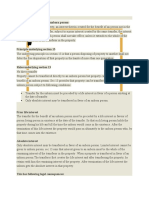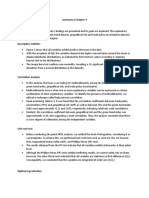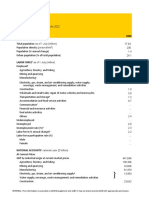0% found this document useful (0 votes)
103 views14 pagesITL Tutorial
This document provides an overview of international letters of credit. It discusses key topics such as:
- The letter of credit process involves an importer applying for a letter of credit from their bank, the issuing bank sending it to the exporter's advising bank, the exporter shipping goods and providing complying documents to their bank, and the issuing bank paying and sending documents to the importer.
- Letters of credit benefit both exporters and importers by providing a secure payment mechanism and protecting both parties from risks like non-payment. They are governed by principles of strict compliance and autonomy.
- Key parties in a letter of credit include the importer, issuing bank, advising/confirming bank, and exporter.
Uploaded by
Sadhvi SinghCopyright
© © All Rights Reserved
We take content rights seriously. If you suspect this is your content, claim it here.
Available Formats
Download as PDF, TXT or read online on Scribd
0% found this document useful (0 votes)
103 views14 pagesITL Tutorial
This document provides an overview of international letters of credit. It discusses key topics such as:
- The letter of credit process involves an importer applying for a letter of credit from their bank, the issuing bank sending it to the exporter's advising bank, the exporter shipping goods and providing complying documents to their bank, and the issuing bank paying and sending documents to the importer.
- Letters of credit benefit both exporters and importers by providing a secure payment mechanism and protecting both parties from risks like non-payment. They are governed by principles of strict compliance and autonomy.
- Key parties in a letter of credit include the importer, issuing bank, advising/confirming bank, and exporter.
Uploaded by
Sadhvi SinghCopyright
© © All Rights Reserved
We take content rights seriously. If you suspect this is your content, claim it here.
Available Formats
Download as PDF, TXT or read online on Scribd
/ 14






















































































